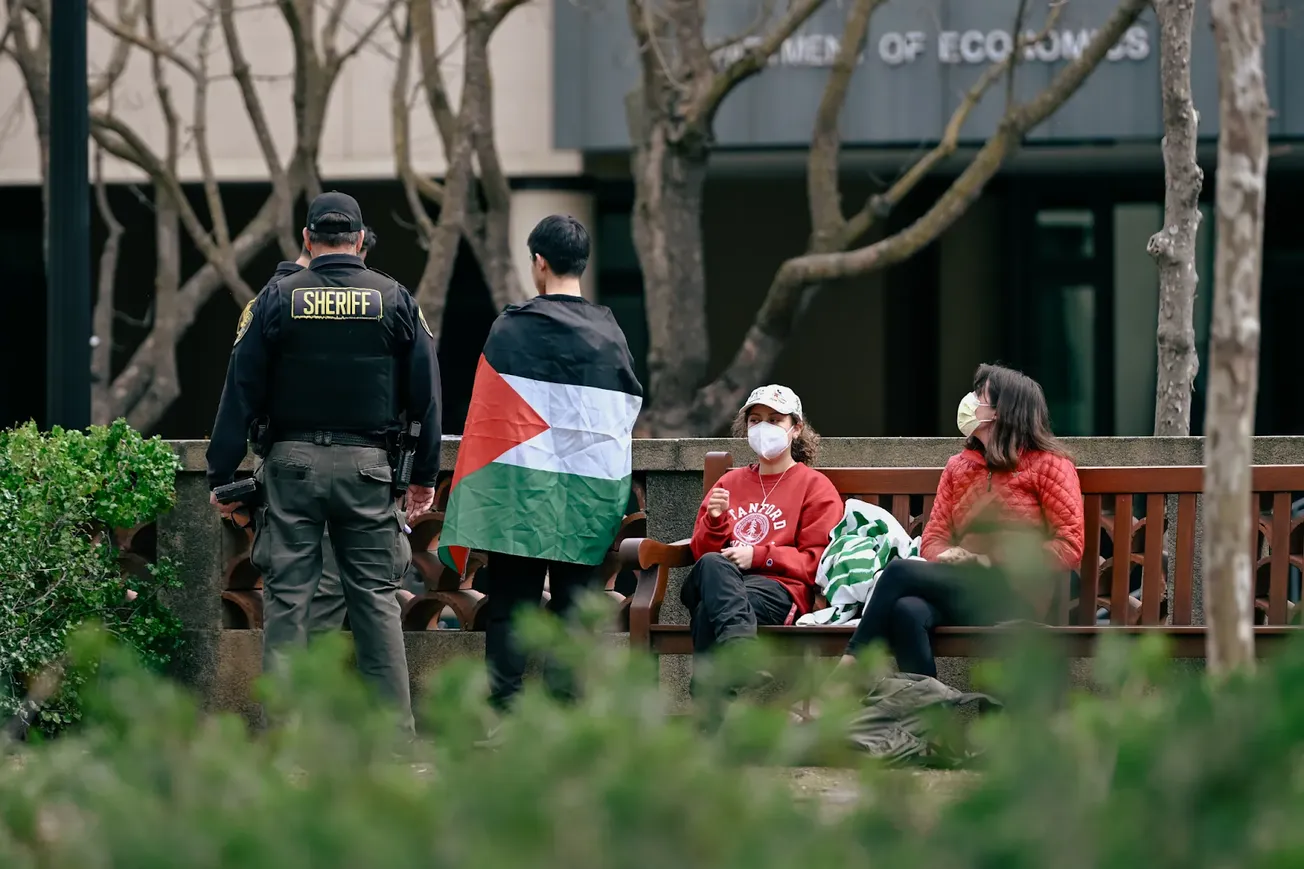Table of Contents
Last month, Stanford attempted to forestall embarrassment on Family Weekend by removing the pro-Palestine sit-in from White Plaza, the University’s designated “free speech zone.” If the administration intended to brush student unrest under the rug, the results were laughable.
Rather than backing down, the protestors took Family Weekend as an opportunity to stage a coordinated assault against Stanford. They began at the weekend’s Friday morning welcome session, at which parents came to engage in a Q&A with Interim President Richard Saller and Provost Jenney Martinez. Activists infiltrated Memorial Auditorium and chanted such slogans as “Palestinian blood is on your hands,” displayed banners, and forced the speakers to pause numerous times.
The protestors were removed by campus security, and eighteen of them were cited with misdemeanors by the Santa Clara Sheriff's office for “interrupting a school event.” According to Provost Martinez, the school would impose further disciplinary action, though specific details are not yet known.
Stanford’s forceful reaction to the Family Weekend fiasco, paired with its earlier removal of the sit-in, has elicited a chorus of confusion as to what exactly the University’s guidelines for free expression are. The Undergraduate Senate and Graduate Student Council have, for instance, developed a joint resolution calling for "clarification from University leadership on protected speech and student protest policies.” Specifically, they wish for clarity on which sort of protest is acceptable and which would merit punishment.
As a private university, Stanford is not bound by the First Amendment’s freedom of speech protections in the same manner as government-run universities. However, Stanford is bound by California’s 1992 “Leonard Law,” under which private, non-religious universities are prohibited from disciplining students for any expression protected by the First Amendment. Examples of unprotected speech, which can be restricted, include harassment, obscenity, incitement of imminent lawless action, and defamation.
Notice that the disruption of school activities is not listed as unprotected speech. Yet, per university policy, it is a violation for students to “prevent or disrupt the effective carrying out of a University function or approved activity,” such as the Family Weekend event. Does Stanford’s rule against disruptive protests—and its disciplinary action against the pro-Palestine activists—contradict the First Amendment, and thus the Leonard Law?
To answer that question, we must look to a landmark 1969 Supreme Court decision titled Tinker v. Des Moines Independent Community School District.
In 1965, five students of the Des Moines, Iowa school district wore black armbands to class in silent protest of the ongoing Vietnam War. Having learned of their plan beforehand, the school principals devised a policy to forbid the wearing of armbands in school and punish those who did not comply. Three of the five students were suspended for their defiance of this policy. Of critical importance: The school could not prove that any disruption or violence had resulted from the armbands.
The children’s parents sued the district for infringing free expression under the First Amendment. Eventually reaching the Supreme Court, the Justices weighed whether “the school district's actions were reasonable to uphold school discipline,” as a lower court had ruled.
In a 7–2 decision, the Court affirmed that children do not “shed their constitutional rights to freedom of speech or expression at the schoolhouse gate.” In demarcating students’ freedoms, however, it defined their parameters by establishing the Tinker test, or “substantial disruption test,” still utilized by courts today.
The test, meant to determine if a school has violated First Amendment liberties, asks: Did a student’s speech “materially and substantially interfere” with the activities of the school? If a substantial disruption to school operations does occur, inside or outside the classroom, officials are within their rights to limit students’ expression. This principle is especially vital on college campuses to shield peaceful proclamations against the heckler’s veto.
As the boundaries of the First Amendment are drawn by the judiciary, and because Stanford is required by law to observe the amendment, the Tinker decision ought to dictate the University’s response to protests. Adherence to its standard means the administration was wrong to remove the pro-Palestine tents in White Plaza, since the only disruption they caused was to the senses.
But it also means that the Family Weekend protest, which deliberately interrupted the opening event, was not protected speech, and that Stanford was appropriate in its discipline. And it means that shouting down a federal judge during a student-organized address last year was not free expression either. The line between protected speech and unprotected disruption may be fine, but it is—thanks to Des Moines—bright red.









